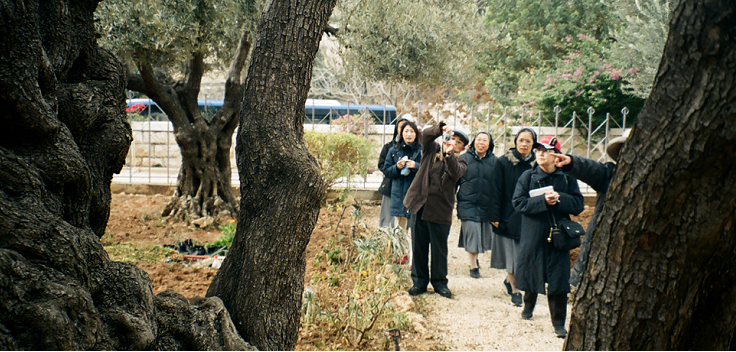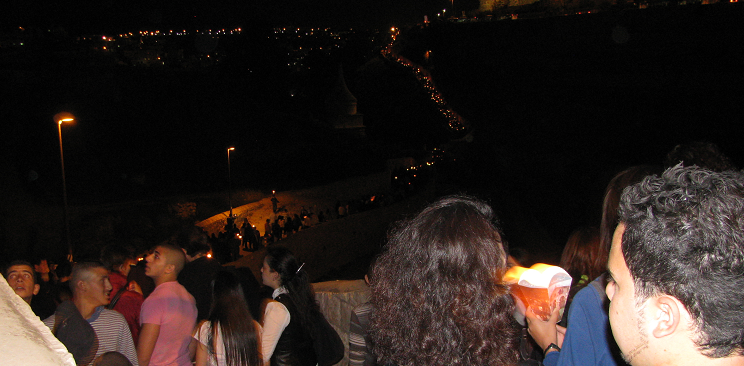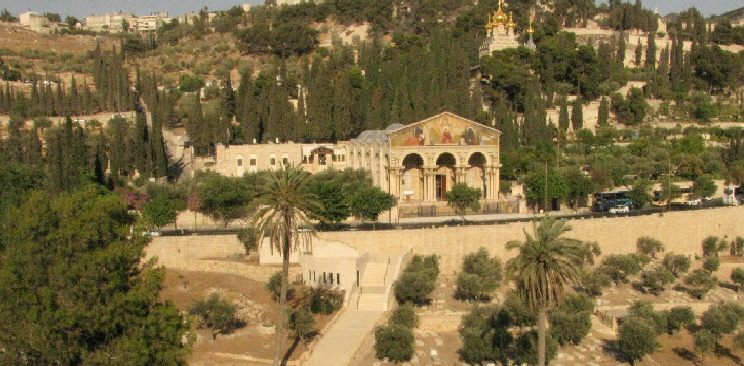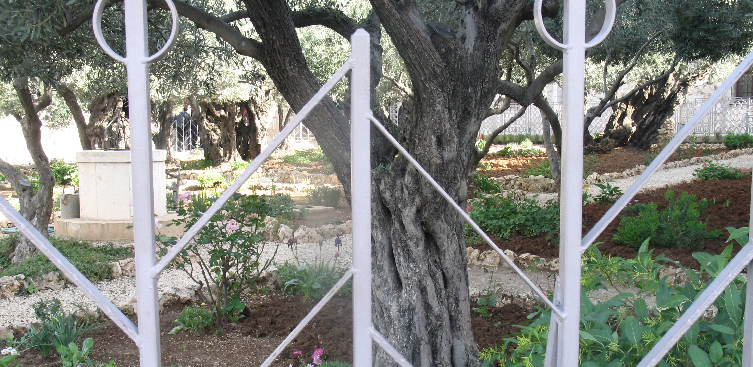









The site Garden of Gethsemane is located at the foot of Mount of Olives in Jerusalem. This is a long established location based on the description as found at the gospel of John (18, 1-2) which narrates that Jesus arrived here with his disciples after the Last Supper and where he was arrested:
When Jesus had spoken these words, He went out with His disciples over the Brook Kidron, where there was a garden, which He and His disciples entered. 2 And Judas, who betrayed Him, also knew the place; for Jesus often met there with His disciples.
In Luke (22: 43-44) the focus of the story is the agony of Jesus during those dire hours:
And there appeared an angel unto him from heaven, strengthening him. And being in an agony he prayed more earnestly: and his sweat was as it were great drops of blood falling down to the ground.
The place functions as a pilgrimage site since the 4th century AD. The different sites of the Night of Jesus’ Agony had been replacing localities within the area of the Garden of Gethsemane in different periods. The pivotal sites were the Garden and the Grotto. Two basilicas one from the Late Antiquity Byzantine and the Crusader period commemorated the Agony and their ruins had been exposed near the garden. During the Mamluk period the place was abandoned and consequently ruined and as of 1681 it is managed and owned by the Franciscans (Custodia Terra Sancta). The process of designing and managing the site as a ritual place by its owners the Franciscans, and the relationships between them and the pilgrims has been the main focus of my fieldwork. The ancient olive trees (the oldest is dated to late 11th century) are recognized by Christian believers as sacred living relics which witnessed the Agony of Jesus in his last hours. The Franciscans had been purchasing lands in the Garden's area since the 17th century, but only at mid 19th century they initiated alterations of the Garden's layout. The main aspiration of the designers was to establish their dominance over the area of Gethsemane. To that end the designers have been changing the gardening style several times, and enforced a growing degree of control over the pilgrim's activity and ultimately constructed a church (superimposed on the earlier ones) therein in 1924. Following these spatial alteration ritual activities inside the sacred Garden are highly restricted and other alternatives to experience the Agony under the Olives are offered in different outdoor spaces around the Garden.
Michal Bitton